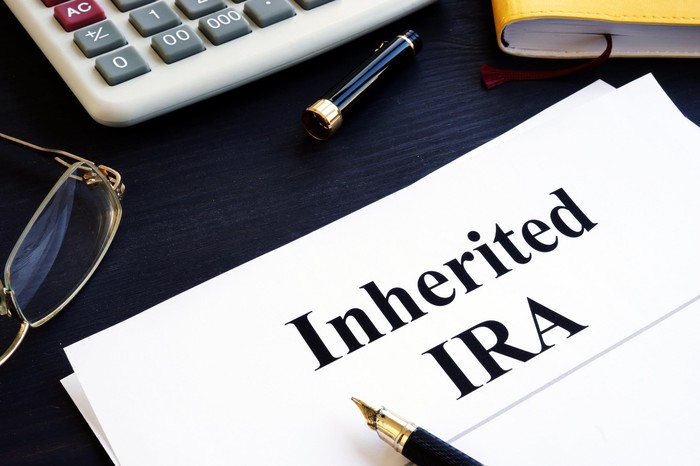Leaving the money in an inherited IRA is a better option for younger spouses who want to access some of their inheritance before 59 1/2. They'll have the option to take a lump-sum distribution, withdraw all the money by the end of the 10th year after the year of the deceased's death (the end of the fifth year if the deceased died in 2019 or earlier), or take RMDs based on their own life expectancy.
Inherited IRA rules for non-spouses
Non-spouses don't have the option to roll their inherited IRA funds into their own retirement account. Most non-spousal beneficiaries inheriting retirement account funds after 2019 are also unable to take RMDs based on their own life expectancy (discussed below).
The only non-spousal beneficiaries who can use the life expectancy method for inherited IRAs in 2020 and later are:
- Minor children (only until they reach 18)
- Disabled or chronically ill individuals
- A person not more than 10 years younger than the deceased
Those who don't meet one of these criteria will have to use the 10-year method. There's no rule about how much you must take out each year with this option. You just need to make sure everything is out by the end of the 10th year after the year the original account owner died, or you could face a 25% penalty on the amount you failed to withdraw.
Your options for receiving benefits
Here's a breakdown of inherited IRA withdrawal options for spousal and non-spousal beneficiaries.
Spousal beneficiary
Spousal beneficiaries can choose between the following inherited IRA options:
- Roll over the funds to your own retirement account: This enables you to avoid paying taxes on the money in the year of the inheritance and gives the funds more time to remain invested.
- Lump-sum distribution: This will be taxable if the money comes from a tax-deferred retirement account, like a traditional IRA or 401(k).
- Take RMDs based on your life expectancy: You must take mandatory annual withdrawals beginning in the later of the year the deceased would have attained 73 or Dec. 31 of the year following the year of death. You calculate your RMD amount by dividing the inherited IRA balance at the end of the previous year by the distribution period next to your age in the IRS Single Life Expectancy table.
- Withdraw all funds by the end of the 10th year after the year of the original owner's death: There's no mandatory annual withdrawal for this method. Note that you must withdraw all funds by the end of the fifth year after the year of the original owner's death if they died in 2019 or earlier.
- Disclaim the funds: If you don't need the money and don't want the additional taxes the inheritance could bring, you can disclaim the money. It will pass to the deceased's contingent beneficiaries or their estate.



